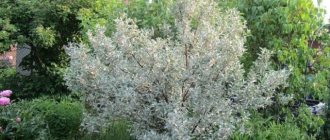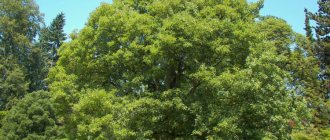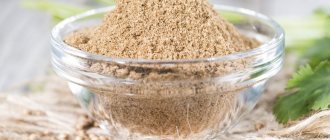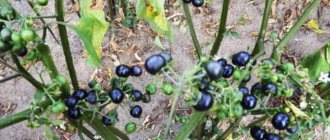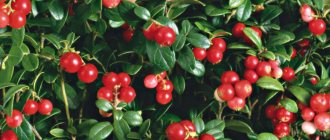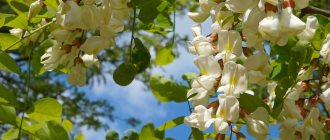Common juniper is a coniferous shrub or small tree that belongs to the genus Juniperus of the cypress family (Cupressaceae). The plant is toxic!
As a strong disinfectant and also as a medicine, common juniper was known back in the 1st century. So, during severe cholera epidemics, the premises were fumigated with smoke from branches and pine needles, plant resins, and chewed berries. Such actions are also carried out during an influenza epidemic.
Both traditional and official medicine widely use the beneficial and medicinal properties of common juniper to treat the gastrointestinal tract, liver, kidneys, bladder, etc. In complex therapy, plant preparations are prescribed for certain cancer diseases. In addition, juniper has blood purifying properties and improves metabolic processes in the body.
Essential oils with disinfectant properties are obtained from pine needles and berries, and burnt juniper turpentine oil (“juniper tar”) is obtained from wood, used as an external analgesic and diversion agent.
The benefits of common juniper in cooking are great. Cone berries have a spicy, light balsamic, resinous smell, reminiscent of the aroma of forests and meadows. As part of many spicy mixtures, they are used when cooking meat, especially fatty pork and lamb, game, dark sauces, vegetables, etc. Used for pickling and pickling vegetables, in particular cabbage, as well as in making sweets and gingerbread.
Common juniper berries are used in the alcoholic beverage industry, including juniper vodka and gin, as well as in the production of kvass, fruit juice and beer. Juniper essential oil is used in perfumery.
As a fast-growing and ornamental plant, common juniper has found application in landscape design: it can be found in parks, squares, and looks good in a hedge. Planted as a soil-fixing and anti-erosion plant. Common juniper releases 6 times more phytoncides than coniferous trees, and 15 times more than deciduous trees, thus purifying the air.
Kinds
Juniper is a genus of evergreen coniferous shrubs or trees, in addition to common juniper, it consists of 75 species, including:
- tall juniper – Juniperus excelsa Bieb.;
- stinking juniper – Juniperus foetidissima;
- prickly juniper (red) – Juniperus oxycedrus;
- juniper polycarpos – Juniperus polycarpos Koch;
- false Cossack juniper – Juniperus pseudosabina & CAMey.;
- juniper hard (hard) – Juniperus rigida Siebold;
- Cossack juniper – Juniperus sabina;
- hemispherical juniper – Juniperus semiglobosa Regel;
- Virginia juniper – Juniperus virginiana and others.
Some species, for example, Cossack juniper, spiny juniper, are used for medicinal purposes. False-Cossack juniper and others, as well as common juniper, have found use as a spice.
Some species, such as Juniper virginiana and Juniper prickly, serve as raw materials for the production of essential oil.
Common juniper. Latin name : Juniperus communis L.
Other names: juniper, juniper, juniper, heather, heather, arsa, mesenteric, yalovets, grouse berries.
Botanical description
Common juniper is an evergreen coniferous shrub, less often a tree. Height of common juniper: 1-8, up to 12 m.
The trunk is straight and branched. The bark is thin, cracking, flaky. Color: dark gray, gray-brown. Young shoots of common juniper are triangular, color: reddish-brown.
Branches hanging down or pressed to the trunk. Bush forms are multi-stemmed, with a broadly ovoid crown. Tree-like - single-stemmed, narrow-cone-shaped crown.
The leaves of common juniper are needles, sessile, needle-shaped, hard, prickly, linear-subulate, subulate-pointed, almost triangular, with a wide whitish stripe in the middle, widely spaced, connected in whorls of 3 pieces. In the 4th year, the common juniper sheds its leaves (needles), replacing them with new ones.
The plant is dioecious or less commonly monoecious. Male cones are elongated oval spikelets, located in the axils of the leaves. Color: bright yellow.
Female - oval, oblong-ovoid cones of common juniper, sit on very short stalks, consist of 9 whorled seed scales. Color: light green. In the second year after flowering, the upper scales grow among themselves and with the seeds, forming fleshy, juicy berries - cone berries. Color: bluish-black, with a bluish waxy coating.
Common juniper seeds are triangular, oblong. Color: brown, yellowish-brown.
Blooms in June-August. The fruits of common juniper ripen in the second or third year in September-October. Seeds - in the fall of next year.
The plant begins to bear fruit at 5-10 years of age. The lifespan of the common juniper is up to 600 years (there is evidence that it lives up to 2000 years).
Propagation of common juniper: seeds.
Features of growth
Common juniper is a light-loving species, although it can grow in dense shade, which limits access to daylight to 80%. The species tolerates long-term exposure to high ultraviolet radiation. In open and very sunny areas it can withstand temperature fluctuations reaching 60°C near the ground during the day. Prefers poor soils, limestone and sandy, as well as peat, and tolerates a wide range of pH and salinity.
Common juniper is frost-resistant, but is sensitive to wet snow sticking to the branches - they break. Prolonged droughts have a detrimental effect on the plant, but it also does not tolerate stagnation of water. Can survive and be reborn after small fires. In 5-12 years it successfully colonizes abandoned fields and poor pastures. In such areas, common juniper is recognized as a key pioneer species, initiating the development of forest vegetation as a secondary succession.
It is also one of the first species to colonize inland dunes and drying marshes. In general, common juniper is characterized by significant vitality. It easily releases young shoots from the buds of random roots and retains vital activity even in the event of severe damage to the trunk or bark.
Due to multi-stage growth, calculating the age of juniper is difficult. The largest recorded representatives of this species (at the beginning of the twentieth century in Great Britain) had a circumference of 2 m. It is estimated that the age of the common juniper, growing in the most difficult conditions in the north of Scandinavia, may be more than a thousand years old.
Plant communities of common juniper
Common juniper, which grows in the north and in the mountains, does not object to the community of dwarf species of willow, cloudberry (Rubus chamaemorus), black sedge (Carex nigra) and heather (Calluna). In the mountainous regions of Northern Europe it forms shrub communities with the Carpathian variety of downy birch (Bétula pubéscens), with heather and blueberries. In the Alps it grows in a community of mountain pines and herbaceous vegetation.
In North America, this juniper grows in various shrub and herbaceous-sedge communities in the far north and in the mountains, as well as in numerous forest communities with a predominance of species such as: yellow pine (Pínus ponderósa), Scots pine (Pínus sylvéstris), pseudo hemlock ( Pseudotsuga), white fir (Abies cóncolor), Engelmann spruce (Picea engelmannii), aspen (Populus tremula) and mountain fir (Abies lasiocarpa).
Habitat
Common juniper is common in the temperate climates of North America, Europe, Asia, as well as in North Africa, Nepal, and Pakistan. On the territory of the CIS - in the forest and forest-steppe zones of the northern and middle regions of the European part, in Ukraine, the Caucasus, the Urals, in Siberia to the Lena River basin.
Prefers dry, sandy soils. The plant can be found on mountain slopes, as undergrowth, in rare pine, deciduous and mixed forests, in cutting areas, clearings, edges, along bushes, on dry hills, limestone, along river banks, in moss swamps. Often forms thickets.
Common juniper is used in landscape design.
A little history
The Indians of North America settled patients with tuberculosis in juniper thickets. In Russia, during epidemics, peasants used smoke from burning juniper branches to fumigate their huts. By rubbing the floors and walls of houses with its cones, they got rid of parasites. The belief in the protective power of juniper was so strong that clouds of its smoke were sent after departing enemies (so that they would not return), and branches were used to drive livestock out to pasture (to protect them from disease). The connection between the number “three” and juniper also seemed mysterious (the seeds are in the cones, the needles are collected in bunches of three).
Collection and preparation
For medicinal purposes, cones, pine needles, and, less commonly, the roots of common juniper are harvested. Needles are collected in summer, late autumn or spring.
Common juniper cones are harvested in the fall, in September-October at the stage of full ripening. Then they are cleared of needles, twigs and immature specimens. Particular attention should be paid to the absence of grass bugs in the raw materials, which give it an unpleasant odor.
When collecting, it is important to distinguish common juniper berries from other similar species, since the berries of some of them, for example, Cossack juniper, are poisonous.
Drying is carried out outdoors in the shade, under a canopy or indoors with good air ventilation, spreading it in a thin layer, remembering to turn it over often. The smell of the finished raw material is unique, aromatic, the taste is sweetish and spicy.
Finished raw materials of common juniper are stored in boxes and bags made of natural material in a dry room with good air ventilation. Shelf life: 2-3 years.
Basic conditions for growing juniper from seeds
One of the main conditions for growing juniper from seeds is to use only freshly harvested planting material. When stored under normal conditions, germination is lost after 1-2 years.
Seeds should be collected in the fall, as soon as the pine cones ripen. To improve germination, they must be removed from the fruit and washed. The seeds have very hard shells, without breaking which they cannot germinate. In addition, the seed embryo is not ready for germination, as it is at rest. In nature, the process of breaking the integument takes place in the stomach of birds that swallow the seeds, and the awakening of the embryo occurs after a long stay in the soil.
In garden culture for growing juniper, the seeds are scarified, that is, the integument is artificially disturbed. For junipers, the best method is chemical, in which dry seeds are placed in sulfuric acid for 30 minutes and then carefully washed. After this treatment, the seeds are sown in open ground. They germinate by spring.
Another method of seed germination is also possible, based on combined stratification, creating ideal conditions for the awakening of the embryo. Immediately after collecting and cleaning the seeds, they are mixed with coarse, clean, slightly damp sand, sawdust or sphagnum moss, placed in plastic bags and stored for 2-3 months at a temperature of +20 to +30 ° C. Subsequently, the seeds are stored for 3-4 months in the refrigerator or basement at a temperature of +3...+5 °C. During the stratification period, it is necessary to maintain an even, moderate level of substrate moisture and avoid temperature fluctuations.
In spring, stratified seeds are washed and sown in boxes or bowls. The crops are placed in a warm (+18…+23 °C) place, where they germinate. The seedlings are kept in the light, but not in the bright sun, and watered moderately, if necessary they are planted. After hardening in the fresh air, they are planted in a ridge.
To simplify the process, seeds after stratification can be immediately sown in open ground ridges. The combination of chemical scarification with further stratification guarantees a higher germination percentage.
When propagated by seed, varietal varieties weakly repeat their characteristic characteristics, and it is very difficult to identify them in the first year. To propagate varietal forms, vegetative propagation is used.
Chemical composition
The beneficial and medicinal properties of common juniper are determined by the components in its composition. All parts of the plant contain essential oil: cone berries 0.5-2%; needles up to 0.18%; stems 0.15%; bark up to 0.5%, which includes phellandrene, alpha-pinene, camphene, cadinene, terpinolene, terpineol, borneol, alpha-terpinene, juniper camphor, etc.
In addition, invert sugar (up to 40%), malic, acetic, formic acids, fatty oil, alcohol, pectin and bitter substances, uniperin, wax (up to 0.9%), resins (about 9.5%) were found in common juniper berries. ), as well as inositol, macro- and microelements: potassium (12.7 mg/g), calcium (7 mg/g), magnesium (1 mg/g), iron (0.14 mg/g), copper (0 .46), zinc (0.39), selenium (9.3), sodium (1.35), boron (89.2 μg/g), etc.
Common juniper needles are a rich source of vitamin C (266 mg%). The stems contain tannins, ascorbic acid, the bark contains tannins (up to 8%), etc.
The roots of common juniper include saponins, tannins and dyes, resins, etc.
Medicinal and beneficial properties of common juniper
The properties of common juniper are as follows:
- expectorant
- bactericidal,
- diaphoretic,
- anti-inflammatory,
- painkiller,
- appetizing,
- soothing,
- choleretic,
- diuretic,
- wound healing,
- blood purifying,
- distracting,
- restorative,
- disinfectant, etc.
Use in folk medicine
A large number of people, freely using plants to treat various diseases, believe that they are absolutely harmless. However, among medicinal plants there are potent, toxic and even poisonous ones. In addition, many people, especially older people, have several chronic diseases.
Therefore, in order for the treatment to be effective, when using it, one should take into account the beneficial and medicinal properties of common juniper and the contraindications that it has, and this can only be done by a doctor. Based on this, before you start taking juniper vulgaris preparations, consult a doctor, or better yet, a herbalist you trust. The information given below is for informational purposes only.
For the head
Traditional medicine uses common juniper (decoction of berries and tincture) externally for headaches.
For ear pain, an alcohol tincture is diluted in half with water and 2-3 drops are instilled into the sore ear or a moistened and wrung-out cotton swab is placed in the ear canal, followed by insulation. A diluted alcohol tincture is also recommended for rubbing the parotid area. These procedures, as well as lotions for hearing loss, help.
Colds and bronchopulmonary diseases
The medicinal properties of common juniper and its use are recognized by both official and traditional medicine as an effective means for thinning mucus, facilitating its evacuation and expectoration in various diseases of the respiratory tract, including chronic ones: cough, laryngitis, tracheitis, bronchitis, tuberculosis and etc. Most often, a decoction of berries is taken for these purposes, but sometimes a decoction of the roots of common juniper is recommended.
Plant preparations are used for feverish conditions, as a diaphoretic.
Given the pronounced bactericidal and disinfectant properties of the plant, during epidemics of influenza and other viral diseases, premises are fumigated with smoke from smoldering branches and pine needles. At the same time, take fresh berries.
Gastrointestinal diseases
Juniper is widely used for both the prevention and treatment of gastrointestinal diseases. Plant preparations enhance the secretion of gastric juice, improve appetite, normalize digestion, and increase intestinal motility.
Juniper is taken for nausea, vomiting, and flatulence. A decoction of the fruits/roots is also drunk for stomach ulcers. Taking fresh berries has a good effect.
Juniper berries are included in the mixture according to M.N. Zdrenko for the treatment of anacid gastritis and gastric ulcer.
For the liver
One of the indications for the use of common juniper is liver diseases, such as cholelithiasis and the tendency to form gallstones, bile stagnation, etc. Herbal preparations of the plant increase bile formation and bile secretion, and have a bactericidal, disinfectant and analgesic effect. Let's take fresh juniper berries.
Bladder diseases
As a medicine, common juniper has proven effective in treating bladder and urinary tract diseases. Considering the diuretic and disinfectant effects, plant preparations are recommended for cystitis, including chronic cystitis, urolithiasis, high protein content in the urine, bladder weakness, and inflammation of the urinary tract. For these purposes, take a decoction and essential oil of berries, as well as juice.
For papillomatosis of the bladder, the already mentioned mixture is prescribed according to the prescription of M.N. Zdrenko, which contains common juniper cones.
Kidney diseases
In folk medicine, common juniper (berry decoction) is used for all kidney diseases, including renal failure, kidney stones, etc. Plant preparations have a diuretic and disinfectant effect, enhance filtration in the renal glomeruli, and improve kidney function.
In addition, the medicinal properties of common juniper help with edema of various origins, including cardiac edema associated with renal failure, circulatory disorders, etc., dropsy. For these disorders, fresh berries are also taken orally.
For the nerves
The healing and beneficial properties of common juniper have a positive effect on the central nervous system. Rubbing the entire body with a decoction of pine needles, as well as 10-15 minute baths, have a calming effect.
Oncological diseases
In complex therapy, treatment with common juniper is prescribed for certain cancer diseases. Thus, plant preparations are taken for gastrointestinal cancer, and the oil extract is used for skin cancer.
For women
The beneficial and medicinal properties of common juniper for women's health have proven themselves well. A decoction of pine needles, as well as boiled water with the addition of essential oil of berries, is used for douching for leucorrhoea and Trichomonas colpitis.
A decoction of common juniper cones is drunk when menstruation is delayed. For inflammation of the appendages, consuming fresh berries according to scheme 2 has a good effect (see section “Common juniper. Recipes of traditional medicine”, “Common juniper berries”).
Oral diseases
The properties of common juniper are used externally as rinses for inflammatory diseases of the oral cavity. In addition, both internal and external use of the plant helps with scurvy.
Skin diseases
Both official and traditional medicine use common juniper widely for the treatment of skin diseases. Plant preparations have a pronounced bactericidal, anti-inflammatory, wound-healing, analgesic effect, cleanse the blood, and improve metabolic processes. Their external use is recommended in the form of washes, lotions, baths for lichen, including wet, scrofula, scabies, rashes, boils, etc.
For these purposes, a decoction of juniper cones is most often used, less often a decoction of the roots. A decoction of the branches has a good effect on exudative diathesis. Essential oil obtained from unripe fruits is used to lubricate damaged surfaces in case of scabies.
Also, to enhance the effect, in addition to external use, fresh juniper berries are consumed internally for dermatoses, lichen, eczema, weeping, etc.
Is it good to have heather in the house? Heather: signs and superstitions
According to one version, the name of the plant “heather” comes from the Old Slavonic “vrasenets”, which means “frost”. Indeed, the small pinkish-lilac flowers covering the shoots of this shrub are very reminiscent of frost. This is probably why heather symbolizes such sad things as hopelessness, separation and loneliness.
- A bouquet or wreath of these flowers received as a gift from our ancestors served as a hint of a cooling of relations between loving people. If one of them transferred his feelings to another person, then he gave heather to initiate separation.
- A plant with such negative energy has never been brought into the home in Europe. It was believed that the appearance of a lilac bouquet on a table or fireplace could cause the death of one of the family members. But heather smoke has always served as an excellent means to cleanse the home of negative energy and any dark entities.
- Non-traditional colors have long been interpreted more positively. For example, a purple bush symbolizes a feeling of admiration for unusual, exclusive beauty, and its snow-white relative means protection from any adversity and the fulfillment of a cherished dream.
- Since school days, everyone has known the sad legend about heather honey. However, in Scotland, the legendary ale and its main component, heather flowers, have always been considered a sign of freedom of feelings, ease of decisions and naturalness of actions.
- On the other hand, a plant that survives in the harsh northern regions was associated with perseverance in achieving a goal and common sense, allowing one to stop at the very last moment, so as not to commit irreparable stupidity at the peak of emotions. It was believed that a dry sprig of heather hidden in clothes would keep people from rash actions and help them not to stray from their intended path.
- In the countries of Scandinavia, this modest shrub, oddly enough, symbolized a seductive woman who had a special, lasting attractiveness for men. Therefore, based on its flowers, the Celts prepared various magical potions that made the stronger sex lose their heads from female charms. But a sprig of white heather served as a talisman for the weaker sex against any violence.
- Vrasenets are often called “rejuvenating grass.” It is believed that if you always carry a branch of it with you, you can maintain health and visual attractiveness for a long time. In addition, the heather amulet guarantees the favor of fortune and protection from the evil eye.
- By placing dried flowers in your wallet or purse, you can attract monetary luck. Such a talisman will keep you from thoughtless expenses, will help you make the right decision in a difficult financial situation, and will become a source of original ideas that will allow you to receive significant income.
- If heather is an undesirable plant in the house, then its thickets under the windows or in the yard will become an effective defense against the penetration of negative energy, evil spirits, evil and envious individuals into the home. In addition, planted in the north or east, the bushes will bring real wealth to the family.
Dosage forms
Common juniper. Berry decoction (for internal use)
1 tbsp. Pour 250 ml of common juniper raw material. water. Bring to a boil and simmer over low heat for 15 minutes. Remove from heat, cover with a lid, insulate and leave for 45 minutes. Strain, squeeze out the raw materials. Bring the resulting decoction to its original volume using boiled water.
Take 1 tbsp. 3-4 times a day after meals.
Infusion (for external use)
50 gr. Pour boiling water over the fruits and shoots of common juniper in a bucket. Cover with a lid, wrap and leave for 4 hours. Strain.
Pour the resulting infusion into the bath or use externally.
Tincture
In a glass container (preferably dark glass), pour common juniper berries with 70% alcohol in a ratio of 1:20. Close the container tightly with a lid and leave in a dark place at room temperature for a week, remembering to shake periodically. Strain, squeeze out the raw materials.
Take 30 drops in a small amount of water 3 times a day after meals.
Traditional medicine recipes
Berry juice
The juice is obtained from ripe berries in September-October. Take 1 tbsp. juice mixed with 1 tbsp. high-quality honey, 3 times a day after meals.
Berries
It is acceptable to replace the decoction of common juniper berries with the internal intake of fresh berries, which are chewed thoroughly. Treatment can be carried out according to two schemes.
1 diagram
Berries take 3-5 pcs. 3 times a day. For prevention purposes during epidemics of viral diseases - 3-5 pcs. once a day in the morning on an empty stomach.
2 scheme
This regimen is more effective and consists of the following: on the first day, eat 4-5 berries. Each subsequent day, add 1 berry, i.e. 4-5 pcs. + 1, etc., thus bringing the number of berries consumed per day to 13-15. Then the quantity is reduced by one every day, returning to the original 4-5 pieces. in a day.
Care
For optimal growth and preservation of decorative qualities, young juniper bushes must be provided with regular care. Despite the fact that the tree is unpretentious, its growth cannot be completely abandoned.
Transfer
Situations arise when juniper has to be moved from one place to another. While the culture is small, this is not so difficult. When transplanting adult specimens, it is important not to damage the plant and leave the roots intact. Preparations for transplantation are carried out in the spring. To do this, they pass around the crop with a bayonet shovel, cutting off part of the rhizome in a circle, at a distance of about half a meter from the trunk. In the fall, the plant is completely removed from the ground and, together with a lump of earth, is delivered to a new habitat, prepared in advance.
Watering
Watering juniper is carried out only when necessary, during prolonged drought. Adults independently cope with obtaining nutrients from the soil, however, to prevent diseases, 1-2 buckets of water are added under the roots twice a year. To maintain soil moisture, there should always be mulch around the tree, which will retain moisture for a long time. Despite its large size, juniper loves watering and moistening its needles, which is carried out at least once a week.
Fertilizer
Once a year, in the spring, juniper should be fed with nitroammophoska. To do this, the liquid mixture is applied under the roots of the plant along with water for irrigation. If juniper is grown in heavy, poor soil, nitrogenous fertilizers and organic matter are added to the soil at least once a month.
soil mixture
For active growth and development, heather is placed in a light substrate, saturated with nutrients and having a sufficient drainage layer. Most species easily adapt to any soil composition, so many gardeners do not think about this problem.
You will be interested in: Majestic and beautiful pine - types and varieties, use of culture
Contraindications
In order for the treatment to be beneficial, you need to take into account the medicinal and beneficial properties of common juniper and the contraindications that it has. The plant is toxic and first of all it is important to follow the recommended dosages. The simultaneous intake of 50 juniper berries threatens severe poisoning, which manifests itself:
- sore throat
- vomiting with blood,
- intestinal colic,
- diarrhea,
- copious urination.
Juniper preparations are contraindicated for:
- increased acidity of gastric juice,
- acute gastritis,
- acute colitis,
- pregnancy.
Despite the pronounced diuretic effect, preparations of common juniper have an irritating effect on the renal parenchyma. Therefore, for kidney diseases, it is recommended to take juniper in smaller quantities and in lower concentrations. Taking the plant as part of medicinal preparations reduces the negative impact on the kidneys. Also, treatment with juniper vulgaris should not be carried out for acute inflammatory diseases of the kidneys, such as nephritis, nephrosonephritis.
The duration of taking common juniper, as well as drugs that contain it, should not exceed 1.5-2 months.
Sources:
D.S. Ivashin, Z.F. Katina. Medicinal plants of Ukraine.
V.Ya. Berry. Medicinal plants in dermatology and cosmetology.
A.P. Popov. Medicinal plants in folk medicine.
V.V. Reshetnyak. Herbalist.
L.G. Dudchenko, A.S. Kozyakov. Spicy-aromatic and spicy-flavoring plants.
L.G. Dudchenko, V.V. Krivenko. Healing food plants.
Advice from the traditional healer Evdokia. Herbalist, illustrated reference book.
I.N. Putyrsky, V. Prokhorov. Universal encyclopedia of medicinal plants.
S.Ya. Sokolov, I.P. Zamotaev. Handbook of medicinal plants.
Rim Akhmedov. Plants are your friends and foes.
M.A. Nosal, I.M. Nosal. Medicine plants and methods of their adoption among the people.
